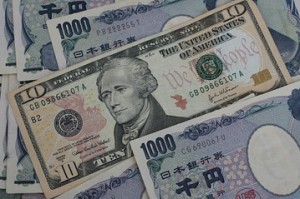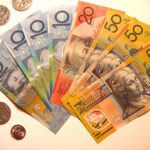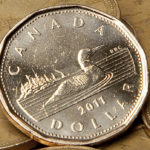 The yen advanced against the US dollar on Thursday, after Asian equities plunged following a report that showed manufacturing activity in world’s second largest economy slowed down in February, boosting demand for haven assets.
The yen advanced against the US dollar on Thursday, after Asian equities plunged following a report that showed manufacturing activity in world’s second largest economy slowed down in February, boosting demand for haven assets.
USD/JPY touched a session low at 101.67 at 08:18 GMT, after which consolidation followed at 101.79, losing 0.51% for the day. Support was likely to be found at February 17th low, 101.39, while resistance was to be encountered at February 19th high, 102.47.
According to preliminary data by HSBC Holdings Plc and Markit Economics, their manufacturing Purchasing Managers’ Index (PMI) for China dropped to a reading of 48.3 in February, or the lowest level in seven months, after a month ago the final value of the gauge was 49.5. Experts had anticipated that the index will remain unchanged this month. China is Australia’s largest export partner.
Following the release of the report, the MSCI Asia Pacific Index of stocks declined 1.2%, boosting demand for the yen.
“The yen still has a safe haven appeal,” said Sean Callow, a Sydney-based currency strategist at Westpac Banking Corp., cited by Bloomberg. “The market is particularly sensitive to the flash Chinese PMI, particularly because it’s timely. I would be very reluctant to draw a sweeping conclusion, but I accept that the market likes to trade off it and the market is in the mood to be bearish.”
Japans Ministry of Finance reported today that the nations trade deficit widened to a record last month, with imports exceeding exports by 2.79 trillion yen (approximately $27.4 billion).
Japan increased its import bill after the March 2011 disaster in Fukushima, made the country shut its nuclear plants and rely on imports of crude oil and gas.
Volumes of energy imports have not increased significantly compared to a year ago, but their dollar value has soared amid weakening yen, which is a result of unprecedented BoJ stimulus in an attempt to snap 15 years of deflation.
A five percent increase in the volume of Japanese crude oil imports in January from a year ago, resulted in a 28% percent surge in its cost. In addition, food import costs have risen 14% in January, compared to the previous year.
Bank of Japan has been purchasing more than 7 trillion JPY (68.4 billion USD) of government bonds each month in its struggle to achieve 2% inflation in two years since April 2013.
BoJ’s policy board member Takahide Kiuchi said last week that the central bank had to be cautious, when deciding to ease monetary policy further to offset the effect of a sales tax increase in April, because this could have negative side effects.
The yen devalued 18% against the US dollar last year, the most since 1979, but in January the currency rebounded 3.2% as a slump in emerging markets, fueled demand for haven assets, such as the yen.
A Bloomberg News survey of 35 economists, showed an unanimous forecast that the BoJ will expand its monthly bond purchases program worth 7 trillion yen, with only two of the respondents predicting the central bank will achieve its inflation goal by the target period, April 2015.
Meanwhile, in the United States, a report by the Department of Commerce revealed yesterday that producer prices increased 0.2% in January, exceeding analysts’ expectations of a 0.1% gain and after rising 0.1% in the preceding month. In annual terms, the producer price index (PPI) advanced to 1.2% last month, in line with analysts’ forecasts, while December’s rate has been revised down to 1.1%.
Core producer prices, which exclude the volatile food and energy categories, rose 0.2% in January, outstripping analysts’ projections of a 0.1% gain, following another 0.3% increase during the previous month.
The index of consumer prices in the country probably rose 0.1% in January compared to December, according to the median estimate of experts, slowing down in comparison with a 0.2% gain in December compared to November. Annualized consumer price inflation probably reached 1.6% last month, after it was 1.5% in December. The official figures are expected to be released at 13:30 GMT. Faster than expected pace of inflation will certainly provide support to greenback’s demand.
At the same time, the minutes of Federal Reserve Bank’s policy meeting on January 28th-29th showed that several policy makers said in “the absence of an appreciable change in the economic outlook, there should be a clear presumption in favor” of continuing to pare back the central bank’s monthly monetary stimulus by 10 billion USD at each meeting.
As the rate of unemployment decreases at a faster than expected pace, even while other labor-market indicators signal weakness, bank’s policy makers agreed that it would “soon be appropriate” to revise their guidance about the time horizon of record-low borrowing costs.
Janet Yellen, in her first testimony to Congress as head of the Fed, said on February 11, the central bank will “likely reduce the pace of asset purchases in further measured steps at future meetings”, but also underscored that the recovery in the labor market in the US is “far from complete”. She also reiterated that the pace of cutting back Fed stimulus was not on a preset course.
The central bank announced in December that it will pare monthly bond-buying purchases by $10 billion, after which it decided on another reduction of the same size at the meeting on policy in January, underscoring that labor market indicators, which “were mixed but on balance showed further improvement”, while nation’s economic growth has “picked up in recent quarters.”
The central bank will probably continue to pare stimulus by $10 billion at each policy meeting before exiting the program in December, according to a Bloomberg News survey of 41 economists, conducted on January 10th.
Elsewhere, AUD/USD fell to a session low at 0.8937 at 4:10 GMT, after which consolidation followed at 0.8955, losing 0.52% for the day. Support was likely to be received at February 13th low, 0.8928, while resistance was to be encountered at February 19th high, 0.9044. The MSCI Asia Pacific Index of stocks declined 1.2%.





